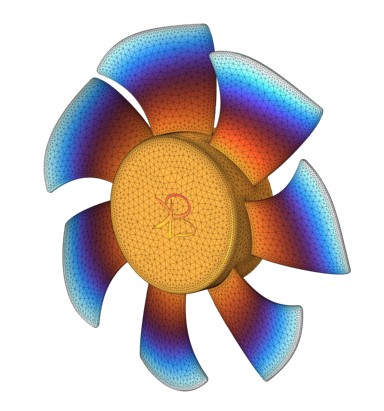Introduction
Finite Element Analysis (FEA) is a powerful computational tool used to predict how objects behave under various physical conditions. Whether you're designing a new product or testing the structural integrity of an existing one, FEA can save time and resources. Here are some essential tips to ensure your FEA simulations are accurate, efficient, and effective.
1. Understand Your Objectives
Before starting your FEA simulation, clearly define what you want to achieve. Are you testing for stress, thermal properties, vibration, or fluid dynamics? Knowing your objectives will guide your choice of materials, boundary conditions, and analysis type.
2. Choose the Right Software
Selecting the appropriate FEA software is crucial. Popular options include ANSYS, Abaqus, and SolidWorks Simulation. Each has its strengths, so choose one that best fits your project's needs and your team's expertise.
check out our resources 👇
3. Create an Accurate Geometry
The accuracy of your simulation heavily depends on the fidelity of the geometry model. Simplify the model by removing unnecessary details that do not affect the analysis, such as small fillets or holes, to save computational resources.
4. Mesh Quality Matters

Mesh quality can significantly impact the accuracy of your results. Use a finer mesh in areas with high-stress gradients and a coarser mesh in less critical areas. Ensure that the mesh elements are as regular and uniform as possible to avoid inaccuracies.
5. Apply Appropriate Boundary Conditions
Correctly defining boundary conditions is critical for realistic simulation results. Pay attention to how you model supports, loads, and constraints. Incorrect boundary conditions can lead to misleading results.
6. Validate Your Model
Always validate your FEA model by comparing it with known solutions or experimental data. This step helps in identifying any discrepancies and adjusting the model for better accuracy.
In Finite Element Analysis, the stress-strain relationship is often represented using Hooke's Law:
Equation:
where:
- is the stress
- is the strain
- is the Young's modulus of the material
7. Conduct a Sensitivity Analysis
Perform sensitivity analysis to understand how changes in model parameters affect the results. This can help in identifying critical factors and optimizing the design accordingly.
8. Check for Convergence
Ensure that your solution converges by refining the mesh and observing the results. If the results change significantly with mesh refinement, your solution might not be converged, indicating the need for a finer mesh or better boundary conditions.
9. Utilize Symmetry
If your model is symmetric, use symmetry boundary conditions to reduce computational time and resources. This approach allows you to simulate only a portion of the model while still obtaining accurate results for the whole structure.
10. Document Your Work
Keep detailed records of your simulation setup, including assumptions, material properties, boundary conditions, and mesh settings. Documentation helps in troubleshooting and future reference.

Case Study: FEA in Automotive Design
In automotive design, FEA is used extensively to ensure vehicle safety and performance. For example, car manufacturers use FEA to simulate crash tests, optimizing the design of crumple zones and airbags. By conducting virtual crash tests, manufacturers can make iterative design changes without the cost and time associated with physical prototypes.
Common Pitfalls to Avoid
- Over-simplifying the model: While simplification is necessary, overdoing it can lead to inaccurate results.
- Ignoring material properties: Always use accurate material data; incorrect properties can lead to significant errors.
- Poor meshing: An improper mesh can skew results. Pay attention to element quality and distribution.
Conclusion
FEA is a critical tool in modern engineering, providing insights that are often impossible to obtain through physical testing alone. By following these tips, you can enhance the accuracy and efficiency of your simulations, leading to better, more reliable designs.
you can contact us (bkacademy.in@gmail.com)
rested to Learn Engineering modelling? Check our Courses?

4 replies on “Tips for Finite Element Analysis (FEA) Simulation”
[…] relevant in some particular domain, but overall, these are a good start if you are new in research simulation software you will get a rough idea of what is going on in the market. Choosing your research […]
[…] part of the SIMULIA suite from Dassault Systèmes, is designed for advanced FEA and multiphysics simulations. It is widely used in industries such as automotive, aerospace, and […]
[…] (NASA Structural Analysis) is a powerful finite element analysis (FEA) software used extensively in aerospace engineering. It provides comprehensive solutions for static […]
[…] non-linear material properties or large […]